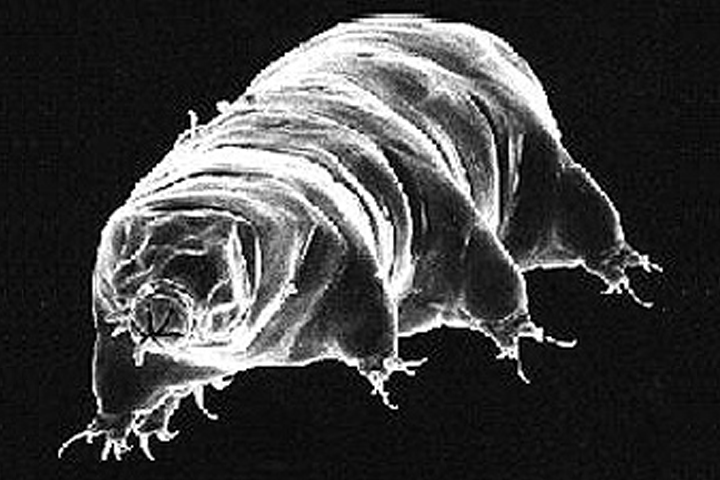A tiny species of nearly indestructible creatures may have just taken over the moon before humans — although we have no one but ourselves to blame.

Thousands of microscopic tardigrades likely survived a lunar lander crash into the moon last April, according to the founder of an Earth archive project.
The Israeli-run lunar lander, dubbed Beresheet, was supposed to be the first privately funded spacecraft to touch down on the moon. Its payload included a DVD-sized library created by the Arch Mission Foundation, which contained vast troves of information and thousands of dehydrated tardigrades.
The spacecraft slammed into the lunar surface on April 11 after operators lost control of it during the final landing sequence.
Nevertheless, the Beresheet’s cargo likely survived the crash, according to Nova Spivack, the millionaire founder of the Arch Mission Foundation.
“Our payload may be the only surviving thing from that mission,” Spivack told Wired in a story published Monday.
Spivack says the archive was designed with resilience in mind so it likely endured the crash intact or was scattered across the moon in recoverable pieces. Spivack’s foundation only designed the archive, not the lander, which was made by the Israel-based firm Space IL.

Get breaking National news
The archive was designed to be a “backup” of life on Earth, with 30 million pages of information — including nearly all of English Wikipedia — microscopically etched into 25 sheets of nickel.
The pages of the archive were glued together with an amber-like resin meant to preserve human hair and blood samples, as well as thousands of dehydrated tardigrades held in suspended animation.
Tardigrades, or water bears, are said to be the most resilient life form on Earth. The nearly microscopic creatures can survive the extreme cold and airlessness of space and have even come back to life after 10 years in a dehydrated state.
The chubby-looking, little eight-legged creatures usually live on moss, where they eat plants or bacteria.
Scientists have bombarded tardigrades with extreme heat, cold, pressure and radiation, just to see how long they can endure extreme conditions. They usually don’t disappoint.
“Tardigrades can enter a state of deep suspended animation,” the Arch Mission Foundation tweeted on Tuesday. “They are not able to move around or reproduce on the moon.”
The foundation added that the tardigrades could “potentially” be reanimated within a suitable atmosphere, although there are no guarantees. The moon itself does not have an atmosphere so they will stay there “frozen in time” until someone can reach them.
On Tuesday, Spivack tweeted that the archive contained enough DNA to “regenerate life on Earth, if necessary.” However, he suspects most of that material — except for the nearly unkillable tardigrades — did not survive the crash.
Spivack says the archive followed the rules of NASA’s Office of Planetary Protection, which aims to protect foreign worlds from contamination by earthly organisms.
The Arch Mission Foundation’s goal is to create time capsules of our planet and its civilization that will last for millions of years.
The foundation is currently crowdfunding to send a second capsule to the moon in 2021 with contributors’ DNA on board.







Comments